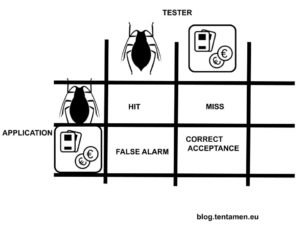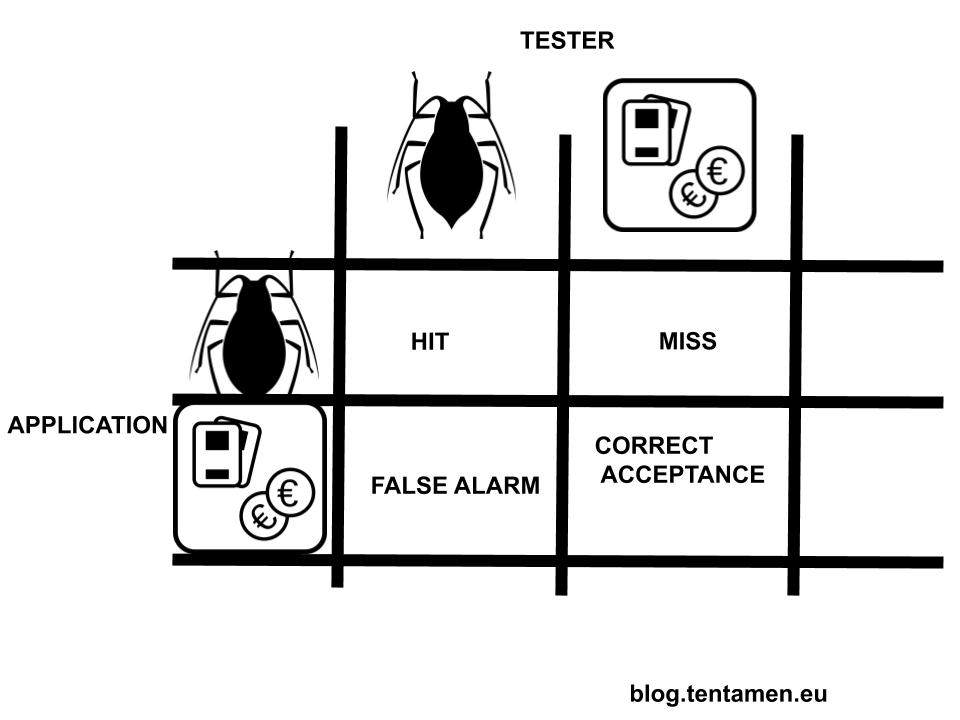
TL;DR
This post is about fallible decision rules. Once software testers have oracles, they have to be careful because decisions based on those oracles could be erroneous. This post is aligned with the Black Box Software Testing Foundations course (BBST) created by Rebecca Fiedler, Cem Kaner, and James Bach.
The Problem
You are lucky and have oracles that could help you in testing your application under test. You reported a bug in Jira, and daily stand up is next on the schedule. Satisfied with your bug report, you are surprised when developer states, ah, this is not a bug, it is a false alarm (false positive)!
This means, your oracle failed you so you reported expected application feature as a bug.
What else could go wrong? There is another bug in Jira, this one reported by customer support. It is about a feature that you thoroughly tested, by your knowledge and skill, however you missed it. Or to put in one sentence, your oracle was wrong.
When developers confirm a bug, this is a hit and your confidence boost. When you demonstrate that feature is working, that is correct acceptance.
Conclusion
There is nothing wrong with false alarm and bug miss. Those cases help you to pivot your oracles. Remember that oracles are based on heuristics, ideas or methods that could be fallible.



